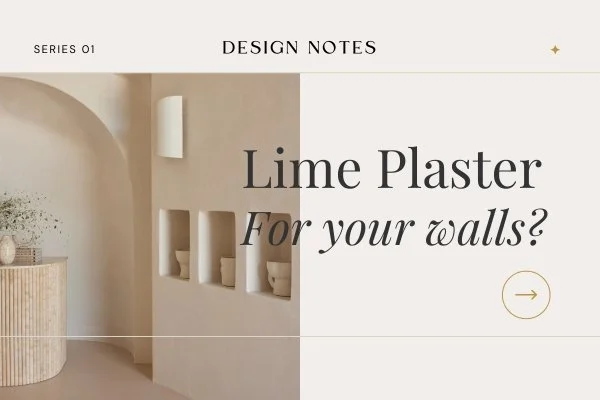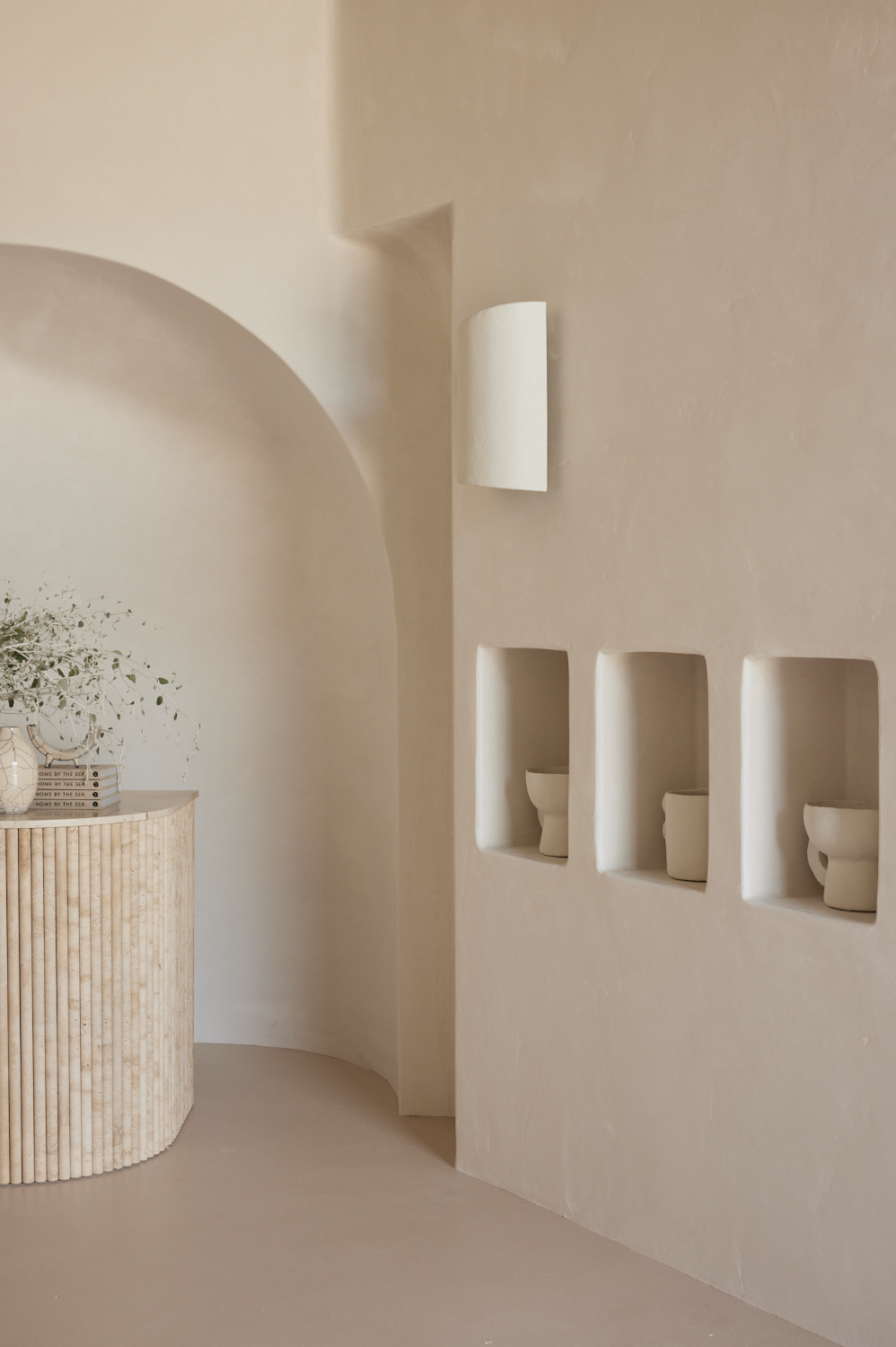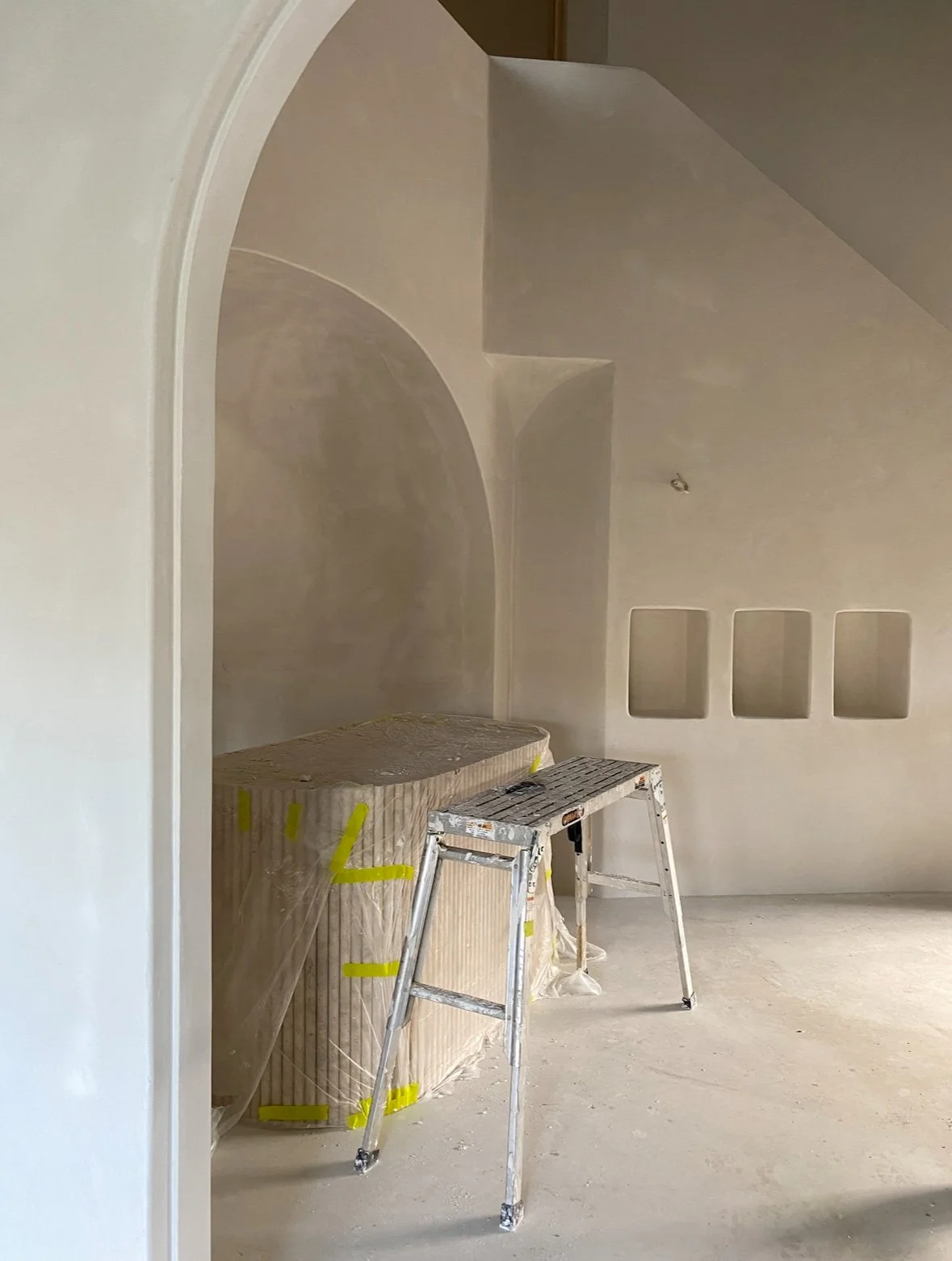DESIGN NOTES – Lime Plaster: The Pros & Cons Of Using It In Your Home
What is lime plaster, and should you use it? Come learn everything you need to know to discover if it’s the right choice for your interiors.
Lime plaster is one of my favourite materials for its timeless appeal and unique benefits. But as with any building material, lime plaster has its drawbacks and won’t be right for every project. Here are a few key considerations to help you know if it’s a good fit for your renovation or interior design project.
Introducing… DESIGN NOTES
A new series to help you transform your interiors with expert tips, creative ideas and sustainable solutions. In today’s deep dive, explore the world of lime plaster, discover the benefits of using this eco-friendly material, design ideas for how you can use it in your interiors, and get an understanding of how to apply it to your walls.
Photography Lynden Foss for Imprint House
What is Lime Plaster?
Lime plaster is a building material composed of lime, sand, and water. It's been used for thousands of years, dating back to ancient times. Unlike modern plasters, which often contain synthetic materials, lime plaster is entirely natural, which gives it unique benefits over some of the most common contemporary options, such as gypsum-based plaster and cement plasters, that your builder might propose.
5 Reasons to Use Lime Plaster In Your Interiors
1. Aesthetic Appeal
Lime plaster has a beautiful finish that adds warmth and sophistication to any space.
Its organic texture and soft, earthy hues complement a wide range of interior design styles, from rustic to contemporary.
2. Durability
Lime plaster is also known for its durability. Unlike gypsum-based plasters, lime plaster is highly resistant to cracking.
This allows for movement with your home's natural settling process, reducing the risk of visible damage over time.
3. Breathability
Lime plaster is a highly breathable material, which means it allows moisture to escape from your walls. This helps to prevent mould and mildew growth, contributing to a healthier indoor environment. It also regulates humidity levels, keeping your home more comfortable year-round.
4. Eco-Friendly
Lime plaster is an environmentally friendly choice, particularly compared with modern synthetic alternatives.
It's made from natural materials and has a lower carbon footprint compared with synthetic plasters. Additionally, lime absorbs carbon dioxide from the air as it cures, further reducing its environmental impact.
5. Thermal Regulation
Lime plaster can help regulate indoor temperatures by retaining heat in the winter and keeping interiors cool in the summer. This can lead to increased energy efficiency and potentially lower utility bills.
Reasons You Might NOT Want to Choose Lime Plaster
1. Cost
One of the biggest drawbacks of lime plaster is its cost. It tends to be more expensive than conventional plasters, not just in terms of materials, but also labor due to the specialised application process.
Choose a supplier who can educate you on the materials, colour choices and recommended appliers. We used Mineral Fox and Royal Finish Plaster.
2. Application Process
Applying lime plaster is a technical process that involves many stages of applying layers, with drying time in between. This means the renovation process can take longer compared with using other types of plaster.
Due to the complexity of the process and the cost of materials, it’s worth hiring an experienced professional and not trying to do it yourself. However, it can be challenging to find someone with lime plaster experience who also has availability during your project timeline. Be sure to factor this in from the start.
3. Maintenance
While lime plaster is durable, it does require some maintenance to keep looking its best. Over time, it may need to be re-limed to maintain its protective and visual qualities. You can finish it with a sealer to protect it even more. We applied a sealer onto the hand rail of the staircase for this reason. Also, use a fine grit sand paper to remove marks rather than wiping with a damp cloth.
4. Price Point
The cost of lime plaster varies significantly depending on the type of lime used, the complexity of the application, and the region you live in. On average, you can expect to pay between $10 and $30 per square foot for lime plaster installation. This price includes both materials and labor.
While this is higher than the cost of conventional plaster, you might decide that the aesthetic, environmental and functional benefits of lime plaster make it worth the investment.
Photography Lynden Foss for Imprint House
Is Lime Plaster the Right Choice for Your Home?
With its natural beauty, durability, and eco-friendly properties, lime plaster is a timeless choice. If you have room in your project timeline and budget, and are willing to invest in a skilled tradesperson, you can add a standout feature to your home that you’ll love for years to come.
Curious about more ways to transform your spaces with thoughtful, sustainable design choices? Discover 10 ways to create a home that truly reflects your style and values here.






